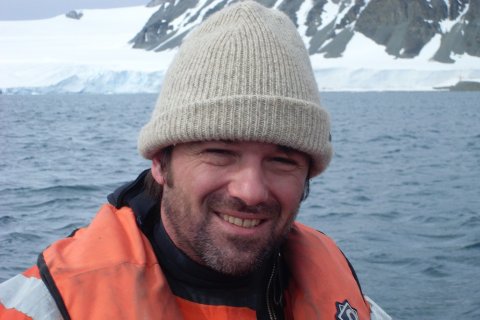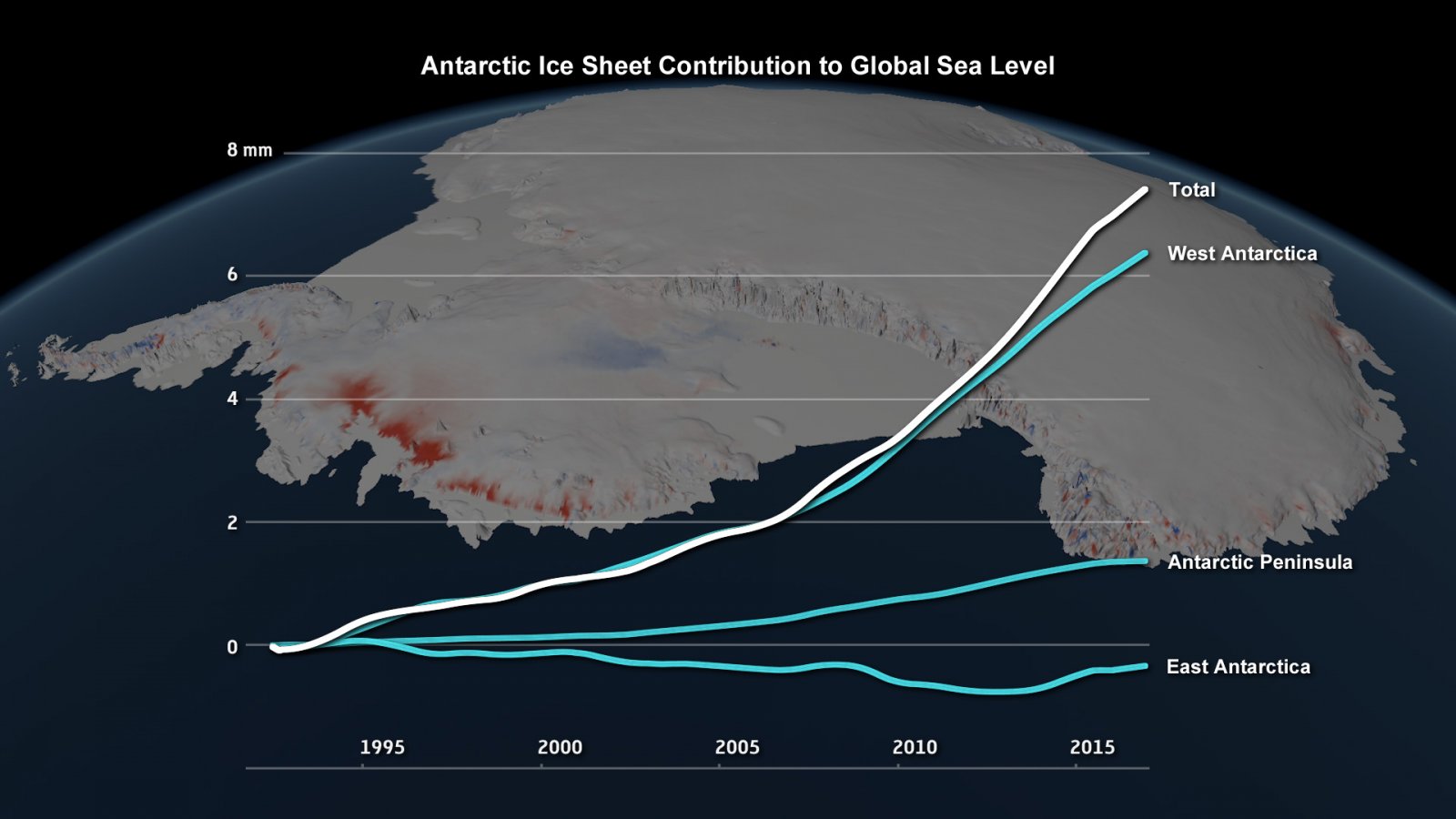Ice loss on Antarctica tripled in 10 years
Melting ice sheet accelerates rising sea levels

Antarctica is losing more ice at an accelerating rate. Over the past 10 years, the rate of ice melt has tripled, from 73 billion tonnes per year, to 219 billion tonnes. As a result, sea levels are rising faster as well, as shown by a combination of measurements conducted by 24 international research groups. The results of this study will be published on Thursday, 14 June in the scientific periodical Nature. One of the five research leaders is Prof. Michiel van den Broeke from Utrecht University.
For the publication in Nature, the researchers combined data about Antarctica that have been collected by 24 different research groups over the past 25 years. They then determined the changes in the thickness and mass of the ice sheet that covers Antarctica. Their results show that the ice loss has tripled over the past 10 years, to an average of 219 billion tonnes per year for the period 2012-2017.
In a single generation

The ice loss in Antarctica has caused sea levels to rise by an average of 7.6 mm world-wide over the past 25 years. Forty percent of that, or 3 mm, occurred just over the past five years. “The mass loss from the ice sheet fluctuates due to variations in snowfall from year to year, but the general trend is clear. And this increase occurred in just a single generation. That’s a big deal”, says Van den Broeke, Professor of Polar Meteorology at Utrecht University.
Tipping point
Van den Broeke’s concern is based on the fact that the accelerated ice melt and its consequences can eventually reach a tipping point beyond which some parts of the ice sheets will melt irreversibly. Van den Broeke: “The Paris climate accord aimed to limit global warming to a maximum of 2°C. But it’s unclear as to whether that will be enough for Antarctica. At the moment, we can’t accurately predict the maximum temperature increase at which these tipping points can occur.”

Complex relationships
In order to accurately predict the future ice loss on Antarctica, scientists require an accurate model of the extremely complex interactions between the oceans, the atmosphere, and the ice sheets. “We don’t have a model like that right now, but people all over the world are working hard on developing one”, according to Van den Broeke.
Greatest ice loss

The study published on Thursday indicates that the greatest ice loss was from the immense Pine Island glacier and the nearby Thwaites glacier in West Antarctica. The bedrock under these glaciers is located under sea level, and it slopes down land-inwards, so the glaciers have an unstable flow, which exacerbates the ice melt problem.
Coldest place on earth
No ice loss has yet been observed at the coldest place on earth, the gigantic mass of East Antarctica. The group led by Van den Broeke has shown that snowfall there has remained constant for decades, and the ice flow seems to be stable too. But due to the expansive size of East Antarctica, there are still many uncertainties. “A change of 1% of the mass of the East Antarctic ice sheet would mean a half-meter change in the sea level. So it’s important to keep a close eye on that area.”
This research was funded in part by the Netherlands Earth System Science Centre (NESSC), and the NWO’s Netherlands Polar Programme and is part of Utrecht University’s interdisciplinary research programme Pathways to Sustainability.
Publication
'Mass balance of the Antarctic Ice Sheet from 1992 to 2017’
The Utrecht University researchers involved in the study are: Michiel van den Broeke, Bert Wouters, Melchior van Wessem, Brice Noël and Willem Jan van de Berg, from the Institute for Marine and Atmospheric Research (IMAU).
Nature, 14 June 2018, doi 10.1038/s41586-018-0179-y.
Read more

"When doing measurements, we occasionally walked around in our thermal underwear"
What is it like to go on an expedition to Antarctica to do research? Read the story of IMAU-technician Mark Eijkelboom went there with colleagues for the installation and maintenance of the scientific measurement equipment.

Warm wind melts snow in Antarctica in winter as well
Glacier researcher Peter Kuipers Munneke from IMAU was the leader of a study how even in the dark winter large meltwater lakes occur in Antarctica. They found a warm wind is responsible.

1997 was ‘tipping point’ for ice caps around Greenland’s edges
IMAU-researchers that participated in this Nature-publication, discovered that around 1997 the natural resilience of Greenland’s smaller ice caps ‘broke down’ around 1997, causing mass loss acceleration – an effect that is irreversible.

Mysterious ‘crater’ on Antarctica indication of vulnerable ice sheet
In a mysterious crater that was spotted on the King Baudoin ice shelf. Then IMAU-researcher Jan Lenaerts (presently University of Colorado) and colleagues, discovered the crater was a collapsed lake. This means the much larger East Antarctica ice sheet is also very vulnerable.

